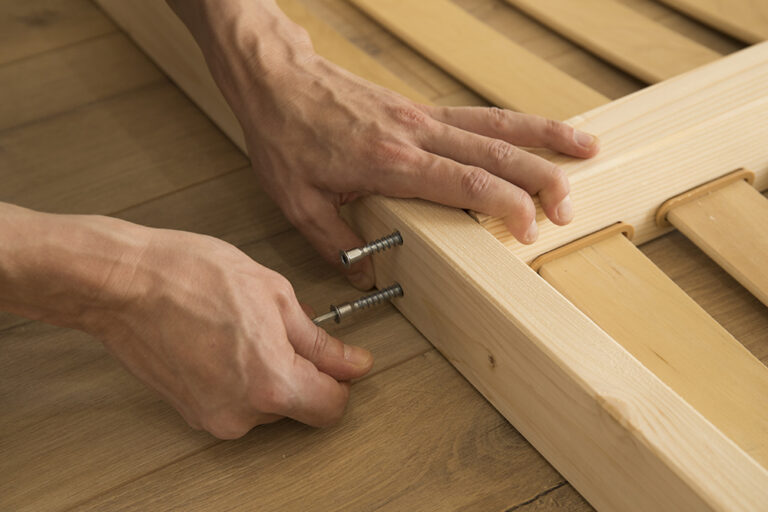Table of Contents
Embarking on the task of moving heavy furniture within your home can be a challenging task, but with the right approach, you can turn it into a manageable and injury-free experience. In this guide, we’ll explore seven steps to help you lift with ease and safely maneuver heavy furniture in your home.
1) Clear the Path
Before trying to move any furniture, clear the path to your destination. Remove obstacles, tripping hazards, and ensure there is ample space to navigate the heavy furniture. This not only makes the process smoother but also reduces the risk of accidents or damage to your furniture.
2) Protect Your Floors
As mentioned before in our previous blog “How to Use Furniture Sliders on Carpet”, we encourage you to invest in furniture sliders or make your own using old towels or blankets. Place them under the legs or corners of the furniture to reduce friction and make sliding heavy items across the floor much easier. Furniture sliders work super well on hardwood, tile, or carpeted floors.
3) Lift with Your Legs, Not Your Back
One of the most important aspects of heavy lifting is proper body mechanics. When lifting, bend at your knees, not your waist. Keep your back straight, and use the strength in your legs to lift the furniture. This technique minimizes the strain on your back and reduces the risk of injury. Watch the video below to get a step-by-step tutorial for how to lift heavy items properly.
4) Team Up
Heavy lifting is often a two or more person job. Enlist the help of a friend, family member, or neighbor. Having an extra set of hands not only makes the task more manageable but also allows for more control and coordination when moving through tight spaces. Below is a picture of 2 movers from His Workmanship teaming up to move a bedroom dresser.

5) Disassemble when Possible
If it’s possible to disassemble your furniture, contemplate dismantling it entirely before relocating. Take off the legs, detach tabletops, and disassemble any modular components. This not only diminishes the weight of each separate piece but also facilitates navigating through doorways and narrow hallways. You may need to use tools such as a screwdriver or wrench to take apart furniture items like beds or dressers.

6) Invest in Lifting Straps
Lifting straps, also known as moving straps or forearm forklifts, are designed to distribute the weight of heavy items across your shoulders and upper body. These straps simplify the process of lifting and carrying substantial furniture pieces, all while minimizing undue strain on your back.

7) Secure Loose Elements
Before initiating the lifting process, check for loose parts that could potentially cause accidents or damage. Use tape, rope, stretch wrap, or straps to secure loose elements like drawers or doors. This precaution ensures a smoother and safe furniture lifting experience for all.
By using a few of these seven steps, you can lift heavy furniture with ease and safety in mind. Remember to plan ahead, use the right tools, prioritize good posture, and most importantly, seek help when needed. With these simply strategies, you’ll transform the daunting task of moving heavy furniture into a well-executed and injury-free process. Contact His Workmanship for any additional support on your next move!



